Report: Australia’s Groundwater Is Worth Billions
A new study finds that Australia’s groundwater contributes more to GDP than some industries.
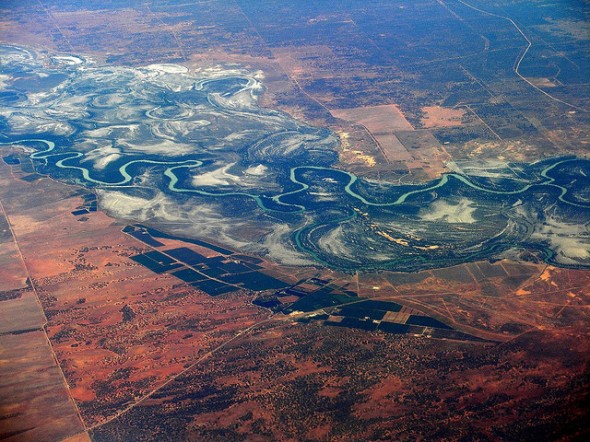
By Codi Yeager-Kozacek
Circle of Blue
Groundwater supplies in Australia add approximately $US 6.5 billion directly to the economy each year and support industries that are worth $US 32.1 billion annually, according to a study released last month by the Adelaide-based National Centre for Groundwater Research and Training. The study also found that Australia currently uses just a fraction of its sustainable groundwater reserves, though use is expected to increase as climate change and population growth put pressure on surface water supplies.
–Craig Simmons, director
National Centre for Groundwater
Research & Training
Until now, comprehensive studies on the economic value of groundwater have been largely missing. This has made it difficult to come up with well-informed decisions about economic development in places where groundwater’s contributions to various industries, communities, and the environment are all critically important, NCGRT director Craig Simmons told Circle of Blue.
“It is better having the information and the data on the table,” Simmons said. “It’s been a large case of not having this information. We need to be working to improve.”
He added that people have been surprised by the numbers, which put the direct economic contributions of groundwater above those of entire industries, such as forestry and fishing. The total value estimated in the study may also be conservative, since it measures only the value of groundwater that is extracted by industries, agriculture, households, and other end users; it does not measure the value of groundwater that is kept in the ground, which benefits the environment and industries that depend on the environment. Moreover, groundwater can also be used as “insurance” against drought.
Where Groundwater Is Worth the Most
It is also important to note that the value of groundwater is not necessarily equal to the amount that users pay for it, though prices for groundwater in places where there are groundwater-trading markets were used to help calculate groundwater’s worth in the study.
Like prices, the value of groundwater changes depending on factors like location and available alternatives. For example, groundwater is worth more in dry areas or during dry periods, and in places where other water sources — such as surface water, desalinated water, or recycled water — are scarce.
This helps to explain why groundwater reserves provide the most value to the mining industry — supporting $US 23.3 billion of mining activity each year — which often operates in dry, interior areas of the country. Agriculture, on the other hand, uses the most groundwater but does not get as much value from it, because many farms can rely on surface water from rivers and lakes. Simmons stressed, however, that these differences should not be construed as a recommendation to allocate groundwater in favor of one industry over another.
“Any decisions on land use have to be looked at in terms of the communities that are living there, the multiple options, and the environment, as well — that’s critical,” Simmons told Circle of Blue. “We don’t want this release to be seen as an invitation to rape and pillage the water resources based on their economic value. That would be completely untrue. It’s about how to balance multiple competing demands in a certain area.”
Balancing The Books
Simmons said that Australia has done a pretty good job of managing its groundwater resources so far, but there is always room for improvement. In an average year, the country uses just 11 percent of its sustainable groundwater reserves — a measure of how much water can be taken from an aquifer without reducing its social, environmental, and economic benefits — though, in some areas, groundwater is being taken out faster than aquifers can be recharged.
“Basically, it is like a bank balance,” Simmons said. “You look at how much you are earning and spending and, in general, try to say sustainable spending should be such that I’m not spending more than I’m earning.”
–Craig Simmons, director
National Centre for Groundwater
Research & Training
Sustainable reserves are based on estimates, which can be difficult to determine because of limited monitoring of withdrawals and gaps in knowledge about the extent of groundwater resources. Though government projects investigating groundwater shot up significantly during the recent Millennium Drought — which lasted more than a decade — more research is needed to protect the resource in the future, according to Simmons.
“I think we are starting to see a little bit of apathy in Australia right now,” he said. “There is a fair view that the drought has broken, and that has led to water not being on the agenda. But I keep reminding people that the next drought is on its way. We know that droughts are just a big part of the Australian climate.”
Predictions that climate change will increase the frequency and severity of droughts in parts of Australia, as well as increasing demands from a growing population, add further challenges to groundwater management.
“What [the situation] will look like under climate change, with population growth, is really still not clear to me,” Simmons said. “A lot of thinking needs to go into that.”
A news correspondent for Circle of Blue based out of Hawaii. She writes The Stream, Circle of Blue’s daily digest of international water news trends. Her interests include food security, ecology and the Great Lakes.
Contact Codi Kozacek



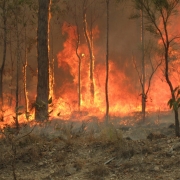
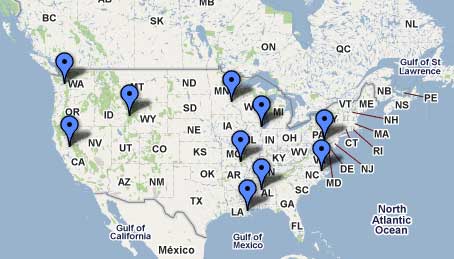




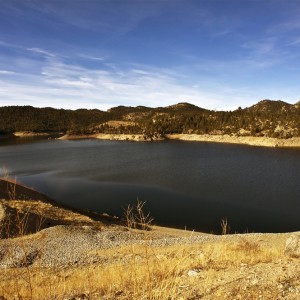
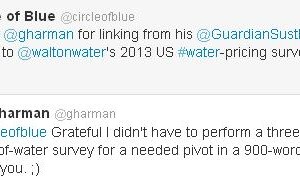
Leave a Reply
Want to join the discussion?Feel free to contribute!